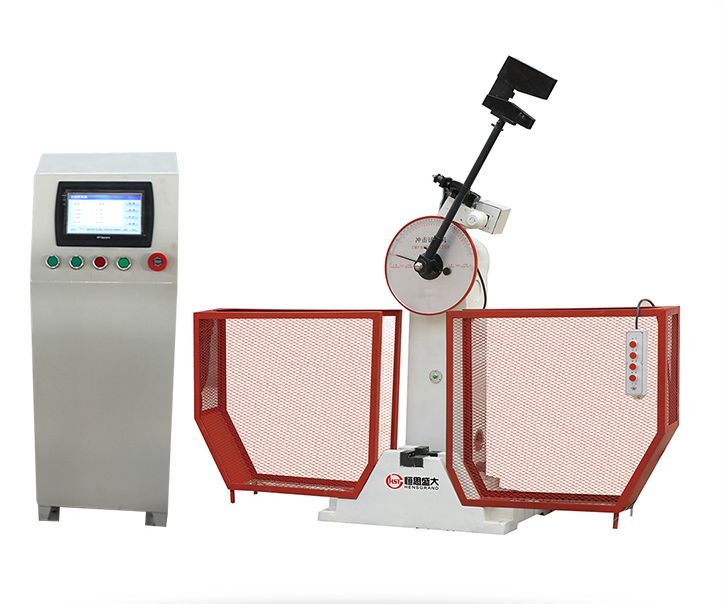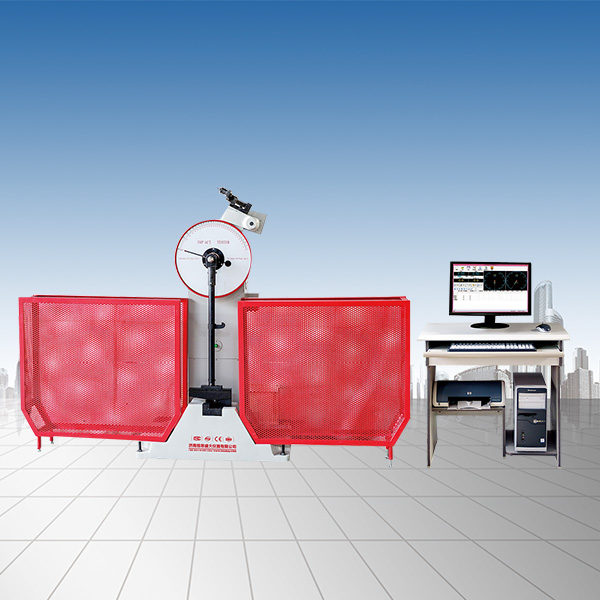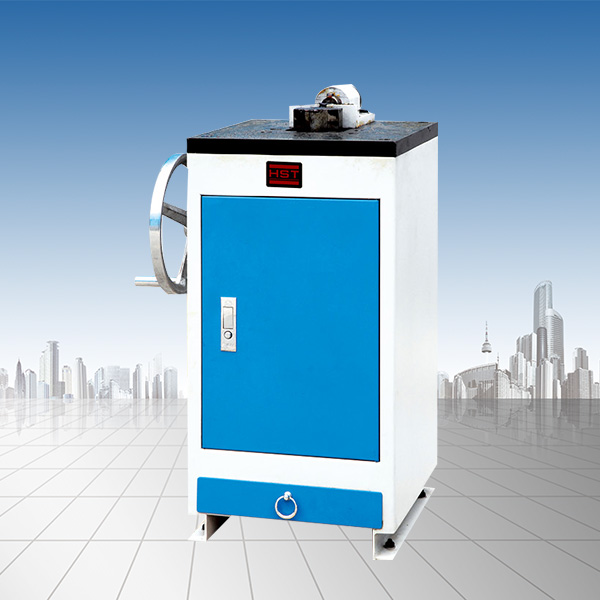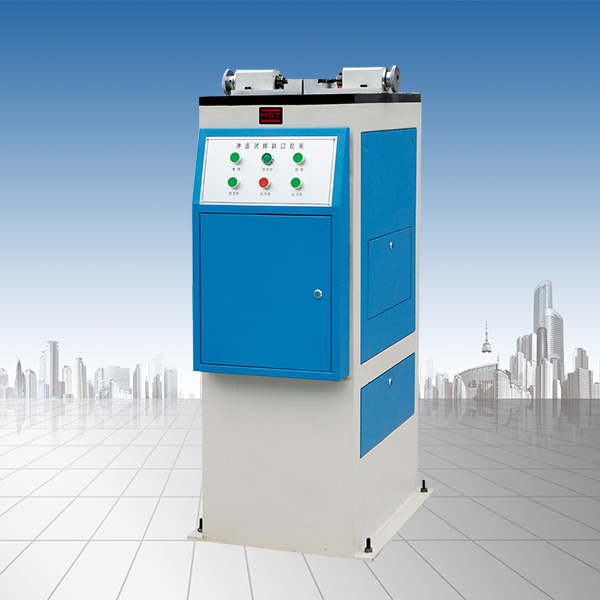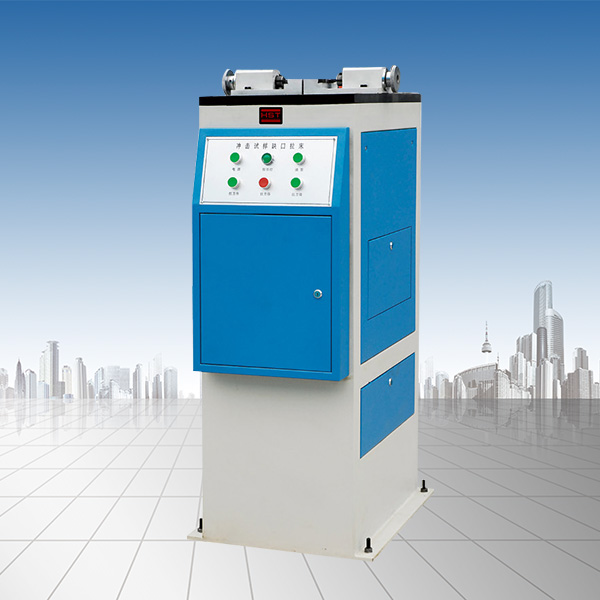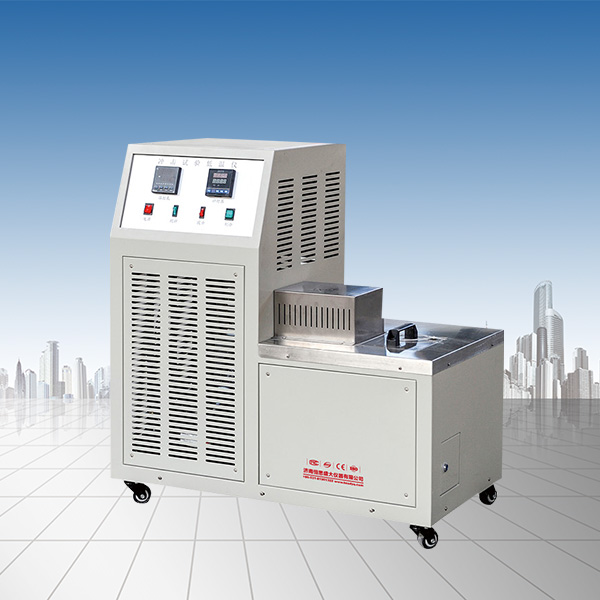Company News
Solution to the yield point error of electronic universal testing machine
Release time:2018-11-23 source:Jinan Hengsi Shanda Instrument Co., Ltd. Browse:
Due to the wide variety of materials and the performance differences are very large, the transition between the elastic stage and the plastic stage is very complicated. The performance of the material's transition process is reflected by indicators such as residual stress as indicators of the turning point between the elastic stage and the plastic stage of the material. Among them, the yield point and non-proportional stress are commonly used indicators. Although the yield point and non-proportional stress are both indicators of the "turning point" of the elastic stage and the plastic stage of the reacting material, they reflect the characteristics of materials with different transition stage characteristics. Therefore, their definitions are different, the method of obtaining is different, and the required equipment is not exactly the same. Therefore, the author will analyze these two indicators separately. This article first analyzes the situation of the yield point: From the above description, it can be seen that accurately finding the yield point is very important in material mechanical properties tests. In many cases, its importance is even greater than the ultimate strength value of the material (ultimate strength is one of the indicators required for the mechanical properties of all materials). However, it is not easy to obtain it very accurately in many cases. It is restricted by many factors, summarized as:
1. The impact of fixtures;
2. The impact of the testing and control links of the test machine;
3. The impact of the result processing software;
4. The influence of the theoretical level of the tester, etc.
Each of these effects contains different aspects. The following analysis will be carried out one by one. The impact of fixtures is a high probability of such an impact in the test, which is mainly manifested as factors such as slippage in the sample clamping part or the large gap between the transmission links of certain force values of the test machine, and the probability of it appearing on old machines is relatively high. Since the machine will wear after a period of use, the relative moving parts will cause wear, which will significantly reduce the friction coefficient, which is intuitively manifested as the scale peaks of the clamps being smoothed and the friction force is greatly reduced. When the test sample is subjected to a static friction force, the test sample will slip, resulting in false yielding. If the test yield value used in the past was normal, but the test yield value now was significantly lower, and the phenomenon was particularly obvious in some harder or brittle materials, this reason should generally be considered first. At this time, the equipment needs to be overhauled in time, eliminate gaps, and replace clamps.
2. Impact of the test machine measurement and control link. The test machine measurement and control link is the core of the entire test machine. With the development of technology, this link has basically adopted various electronic circuits to achieve automatic measurement and control. Due to the profoundness of automatic measurement and control knowledge, complex structure, and opaque principles, once it is not considered in the product design, it will have a serious impact on the results and it is difficult to analyze the reasons. The main points for obtaining material yield points are as follows:
1. The frequency band of the sensor amplifier is too narrow. Since the force value detection elements used on the test machine are basically load sensors or pressure sensors, and both types of sensors are analog small signal output types, signal amplification must be performed during use. It is well known that in our environment there are various electromagnetic interference signals that are coupled into the measurement signal through many different channels and are amplified together, resulting in the useful signal being flooded by the interference signal. In order to extract useful signals from interference signals, a low-pass filter is generally provided in the amplifier according to the characteristics of the material testing machine. Reasonably setting the cutoff frequency of the low-pass filter and limiting the amplifier's frequency band to an appropriate range can greatly improve the measurement and control performance of the test machine. However, in reality, people often look at the stable display of data, ignore the authenticity of the data, and set the cutoff frequency of the filter very low. In this way, while filtering out the interfering signals, the useful signals are often filtered out. In daily life, the data of our common electronic scales is very stable. One of the reasons is that their frequency band is very narrow and interference signals cannot pass through. The reason for this design is that the electronic scale weighs the steady-state signal, and the transition process of the weighing is not concerned, while the material tester measures the dynamic signal, and its spectrum is very wide. If the frequency band is too narrow, the signal at higher frequencies will be attenuated or filtered out, causing distortion. This distortion is not allowed when yield is reflected in the situation where the force value fluctuates up and down multiple times. As for universal material testing machines, the author believes that this frequency band should be larger than 10HZ and reach 30HZ. In practice, sometimes although the frequency band of the amplifier reaches this range, people often ignore the bandwidth of the A/D converter, so that the actual bandwidth is smaller than the set bandwidth. Take the AD7705, AD7703, AD7701, etc. selected from the data acquisition systems of many test machine are used as examples. When the A/D converter is running at "output data rate 4KHZ", its analog input processing circuit reaches a frequency bandwidth of 10HZ. When operating at the output data rate of 100HZ commonly used by the test machine, the actual bandwidth of its analog input processing circuit is only 0.25HZ, which will lose many useful signals, such as fluctuations in the force value of the yield point. Of course, no correct test results can be obtained using such a circuit.
2. The data acquisition rate is too low. Currently, the data acquisition of analog signals is achieved through the A/D converter. There are many types of A/D converters, but most of them are ∑-△ type A/D converters used in the test machine. This type of converter is flexible in use and the conversion rate can be dynamically adjusted, which can not only achieve high-speed and low-precision conversion, but also achieve low-speed and high-precision conversion. Since the data acquisition rate requirement is not too high on the test machine, it can generally meet the requirements by reaching dozens to hundreds of times per second, so a lower conversion rate is generally used to achieve higher measurement accuracy. However, in some manufacturers, it is not advisable to reduce the sampling speed very low in order to pursue higher sampling resolution and extremely high data display stability. Because when the sampling speed is very low, the high-speed changing signals cannot be accurately collected in real time. For example, in the performance test of metal materials, the signal changes when the material yields and the force value fluctuates up and down, so that the upper and lower yield points cannot be accurately calculated, resulting in the failure of the test, and the result is that the watermelon is lost and the sesame seeds are picked up.
So how to judge the bandwidth of a system and the sampling rate?
Strictly speaking, this requires many dedicated HY-1080 personnel to complete it. But through the simple method introduced below, a qualitative understanding can be made. When the sampling resolution of a system reaches more than one tens of thousands, and the display data still does not fluctuate or the display data has a significant hysteresis, it can basically be determined that its passband is very narrow or the sampling rate is very low. Unless in special occasions (such as high-precision calibrators that calibrate the precision of the force value of the test machine), they are not available on the test machine.
3. The control method is improperly used to address the relationship between stress and strain when the material yields (when yield occurs, the stress remains unchanged or fluctuates up and down, while the strain continues to increase). The control mode recommended by the national standard is constant strain control, while the elastic stage control mode before yield occurs is constant stress control, which is difficult to complete in most test machines and a certain test. Because it requires changing the control mode when the yield phenomenon first occurs, and the purpose of the experiment itself is to require the yield point, how can an unknown result be used as a condition to switch the control? So in reality, the same control mode is generally used to complete the entire experiment (even if different control modes are used, it is difficult to switch at the upper yield point, and you will generally choose to go a little ahead). For test machines that use constant displacement control (speed control), since the stress rate of the material in the elastic stage is proportional to the strain rate, as long as the appropriate test speed is selected, speed control can be compatible with the control characteristic requirements of the two stages throughout the process. However, for test machines with only one mode of force control, if the test machine responds very quickly (this is the goal that the automatic control effort wants to achieve), the process time for yield will be very short. If the data acquisition speed is not high enough, the yield value will be lost (reason 2 has been explained), and excellent control performance will become the cause of errors. Therefore, do not select a single load control mode when selecting the test machine and control method.
3. Effect of result processing software. Most of the current production test machines are equipped with different types of computers (such as PCs, microcontrollers, etc.) to complete various types of data tests defined by standard or user. There has been great progress compared to the graphical method widely adopted in the past. However, due to the lag of standards, the original partial definition seems to be unclear enough. As defined by the yield point, HY-20080 explains, without quantitative explanation, it is not suitable for the needs of computer automatic processing. This causes:
1. The respective settings of the judgment conditions are defined in terms of yield point (taking metal tensile GB/T228-2002 as an example) standard: "Level strength: When the metal material exhibits a yield phenomenon, the stress point where plastic deformation occurs without increasing force during the test period should be distinguished between the upper yield strength and the lower yield strength.
Upper yield strength: The stress before the sample yields and the force drops for the first time.
Lower yield strength: During the yield period, the stress at the initial instantaneous effect is ignored. ”
This definition was generally not questionable when using graphical methods in the past, but today it caused problems when using computers to process data.
* Question about yield strength: How to understand "plastic deformation occurs without increasing force (keep constant)"? Due to the existence of various interference sources, even if the material's force value is really constant during the yield stage (this is impossible), the data collected by the computer will not remain constant. This requires a allowed data fluctuation range. Since the national standard is not defined, each test machine manufacturer has to define it by itself. Due to the inconsistency of conditions, the results obtained will naturally differ.
*Question on the upper and lower yield strength: If the material has an upper and lower yield point, there will inevitably be up and down fluctuations in the force value, but what is the amplitude of this fluctuation? The national standard has not been explained. If the choice is too small, the interference may be missed as the upper and lower yield points. If the result is too large, some upper and lower yield points may be lost. At present, in order to solve this problem, all manufacturers have thought of many solutions, such as classifying the "Error band" and "Volatility Amplitude" according to the materials, which can solve most of the usage problems. However, research on unusual materials and new materials still cannot solve the problem. For this purpose, some manufacturers design "error band" and "volatility amplitude" as user-defined parameters, which theoretically solves the problem, but puts forward extremely high requirements for users.
2. What is the misunderstanding of the "initial instantaneous effect" in the definition of the yield point below? How did it come about, and did all the experiments exist? The national standards for these issues have not been explained. Therefore, when pursuing the yield strength, most cases are lost. After reviewing the information from multiple sources, the author learned that the "initial instantaneous effect" is a phenomenon unique to the early production of test machines that measure force through pendulums, and the reason is the influence of the effect of "inertia". Since not all test machines have an initial instantaneous effect, you cannot lose all the lower peak points when obtaining the results. But in fact, most manufacturers' test machine processing procedures have lost a peak point.
4. The impact of the test personnel When the test equipment has been determined, the quality of the test results depends entirely on the comprehensive quality of the test personnel. At present, the comprehensive quality of the operators of material testing machines in my country is generally not high, and their professional knowledge and theoretical level are generally lacking. In addition, the continuous emergence of new concepts and new terms makes it difficult for them to adapt to the needs of material testing. The following problems often occur in the determination of material yield strength:
1. Confuse non-proportional stress and yield. Although non-proportional stress and yield are indicators of the transition state of the elastic stage and the plastic stage of the reacting material, the two are essentially different. Yield is the inherent properties of the material, and non-proportional stress is calculated by artificially specified conditions. When there is a yield point in the material, there is no need to obtain non-proportional stress. Only when the material does not have a clear yield point are non-proportional stress. Some testers did not understand this deeply, thinking that the yield point, upper yield, lower yield, and non-proportional stress exist for each test, and all of them need to be obtained.
2. Taking the trend of discontinuous yield as a national standard with a yield point, it points out that when deformation continues to occur, while the force remains unchanged or fluctuates, it is called yield. However, this phenomenon occurs in some materials. Although deformation continues to occur and the force value continues to increase, the increase in the force value takes place from large to small and then to large. From a curve, it is a bit like a tendency to yield, and does not meet the definition of constant force value during yield. As mentioned in the third category of influences, since there is no quantitative index regulation on the condition of "constant force value", debates often arise about whether this phenomenon is yielding and how to obtain yield value.http://www.hssdtest.com/
Recommended productsPRODUCTS


















